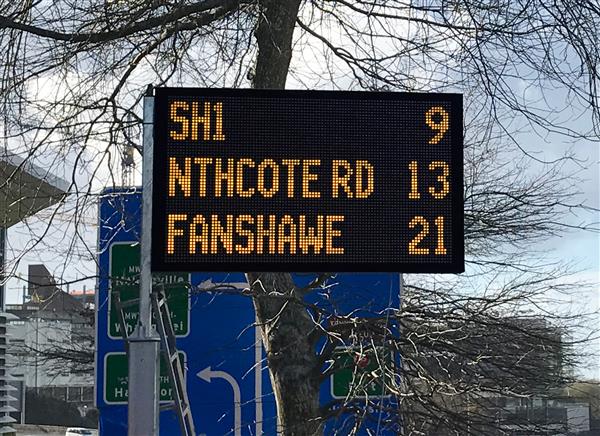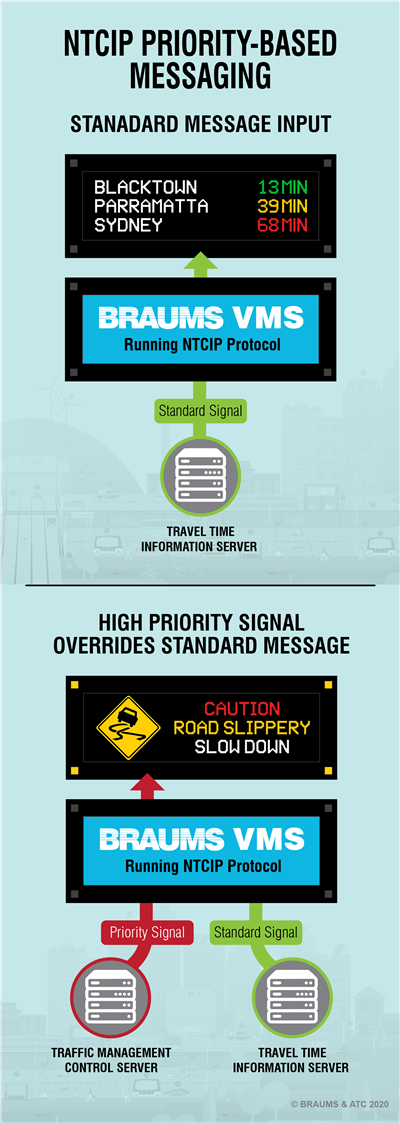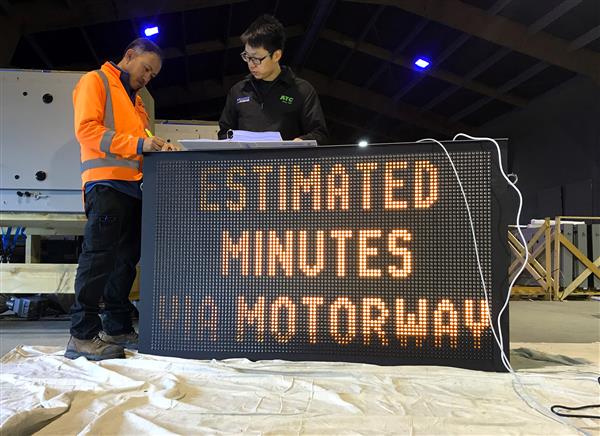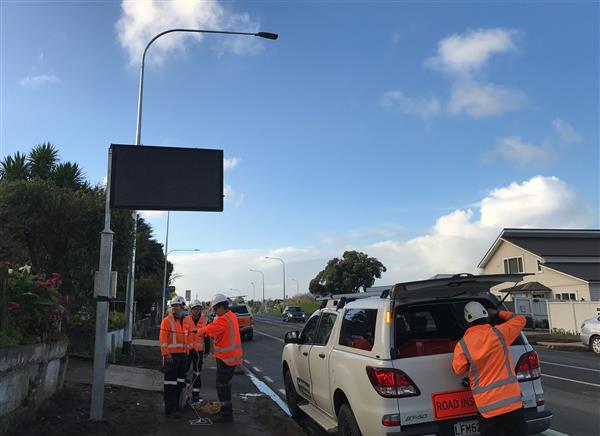BRAUMS VMS in New Zealand
BRAUMS has a long-standing relationship with the Waka Kotahi (formerly New Zealand Transport Agency) that began back in 2015 when VMS technology was introduced to them as an alternative to the signage they had previously had in place.

BRAUMS Electronic Journey Time Type-D VMS using NTCIP Protocol
Waka Kotahi became aware of BRAUMS new technology and expressed great interest as it promised to deliver not only far better reliability, power efficiency, and optical performance, but offered greater versatility and control over message content and delivery.
The relationship began with the installation of 13 over-height detection system VMS in 2015 and has today expanded to more than 170 VMS systems in total across New Zealand.
Quick to Spot the Benefits
Experiencing challenges with their old signage, getting up to 70 call-outs per month for repairs, Waka Kotahi were acutely aware of the downfalls of traditional signs and were extremely receptive to new technology that would eliminate their previous problems.
What was identified by the Waka Kotahi were seven major benefits of the VMS which weren't offered by other providers.
7 Key Benefits of BRAUMS Variable Message Signs
- Efficiency
Saving up to 90% energy consumption compared to existing signs in the market
- Reliability
No loss of luminosity, ever
- Viewability
Directed technology to improve the view for the driver and keep the view stronger over time
- Flexibility
More control over pictograms, colours and fonts
- Installation
Quick to install, no need to tilt, can be DIY, and it's much easier to reduce the size
- Low Maintenance
No cooling systems to manage means maintenance is as simple as an annual wash down and check-up
- Priority-based Messaging
NTCIP Protocol allows a second signal input to temporarily override standard message input

BRAUMS VMS Priority-based Messaging capabilities using NTCIP protocol
Superior Visual Communication
Wanting to make great use of colour in their signs, as well as make use of the ability of these signs to display pictograms embedded in the same matrix, Waka Kotahi identified VMS as the only signage system on the market to allow this. And that is big news.
Apart from VMS in Australia, to be able to display a pictogram in the traditional Australian road signs, there needs to be a separate sign, one for the picture and one for text. When Waka Kotahi learned that the BRAUMS VMS was able to do both on the one sign, from a centralised system managed in Auckland, they were quick to jump on board.

AMA working with BRAUMS engineer, Zeck Luan, to test Type-D VMS
Duel Designed to Perfection
Not only is the VMS designed by electrical engineers, but it is also done in collaboration with optical engineers. This dynamic duo is what has led to the creation of VMS which allows the colour mixing to happen internally, without the driver seeing the individual colours, so that any colour can be created; even crimson if that would be the desire.
Another significant benefit is that the lens allows the LED to consume far less light.
What happens in traditional signs is that engineers have to push the LED harder, which leads to the lighting devices getting tired and eventually looking old and dated. Through our unique design, the VMS avoids this problem by never pushing the LED hard, to begin with. All the light that was going up (as it does in old systems) is now being collimated; the light bounces off the lens, and it directs that light to the driver, not the atmosphere where it's not needed.
As a result, BRAUMS VMS only use 10-20% of the power consumed by competitor signs. Add to this that BRAUMS VMS signs not only achieve all of the optical requirements, but actually far exceed the capabilities of competitors, and the decision by Waka Kotahi was an obvious one.
Made to Fit Unique Specifications
The most recent project in New Zealand was the installation of 160 BRAUMS Variable Message Signs for the Auckland Motorway Alliance. As part of this project, the physical weight of the sign needed to be within a certain value -- lighter than usual -- which required a redesign of the physical structure of the sign.

On-site Type-D VMS testing by BRAUMS and AMA engineers
One of the challenges that most VMS have is the design of the structure to hold it. In this case, the new VMS needed to fit on an existing structure which had already been designed for their previous sign. Bringing all hands on deck, with short notice, BRAUMS was able to deliver VMS within the required dimensions and weight -- including factory acceptance testing and site acceptance testing -- thanks to the flexibility of the technology.
So far, the VMS products that BRAUMS provide are installed in over 65 countries worldwide, delivering superior technological capabilities, while reducing costs, maintenance requirements and energy consumption.
Contact BRAUMS today to learn more.